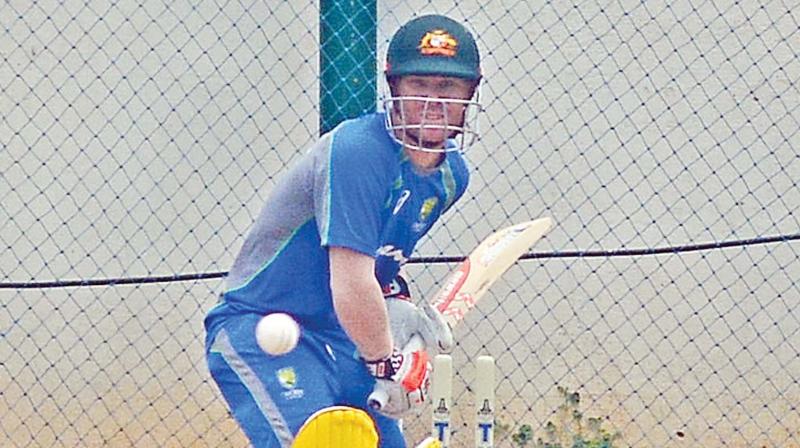With Aussies around, there's never a dull moment

There is never a dull moment when the Aussies are around. India-Australia encounters have always held certain edge to them. And there was a time when it all seemed magical and close encounters became the norm. This was in the phase when we had the Tied Test II at Chepauk in 1986 and then came the World Cup match of 1987 when a single run separated the winners at the very same venue. History was to repeat itself in the 1992 World Cup when one run was the only difference between the teams at the ‘Gabba.
In the days before the ICC cracked down with the match referees, there was so much needle out in the middle that Indo-Oz clashes were picking up a reputation or notoriety second only to the Ashes. The umpires on both continents used to be part of it too and there was no love lost between the players of the two teams and the umpires. However, it would be an exaggeration to say that the teams were playing against 13 when they were touring.
Take the classic decision of LBW that brought about Tied Test II. You could argue for hours about whether Maninder Singh nicked it on to his pad as Ravi Shastri was to say so vociferously the next morning at the Chennai airport. In the classic picture of the finish taken by an amateur photographer, Allan Border at silly point wasn’t even claiming the LBW and Shastri was signalling ‘no run’ to his partner with raised hand. There was so much intrigue to it that when I said this proved the neutrality of Indian umpires, some Aussies thought it was a shrewd political statement more than cricketing fact.
While the teams were level there, India was to end up losing the next two highest profile clashes by one run, the frenetic running of Javagal Srinath and Venkatapathy Raju providing great comic relief. A predictable run out led to India falling desperately short once again. World Cup revenge was not to come till the 2011 competition in India when Yuvraj Singh settled the tight contest with an extremely competitive innings only he could carry off with aplomb as if none of the tension mattered to him or his willow.
It’s a different game of gladiators today as multimillionaire cricketers of both teams clash in what is pure entertainment. The sneaking feeling is the team coach is so full of advisers that there seems to be place for all sorts of them save the investment consultants who handle their portfolios. The game is just a bit lesser for all the money that is floating around the modern game. Not to say that it isn’t interesting when batsmen seem to be able to hit the ball beyond the stands and into the Buckingham Canal that still brings a bit of stench along with sea breeze into Chepauk.
To see an India-Australia clash again at Chepauk – hopefully all stands will be opened courtesy the High Court of Madras – would be to invite an electric encounter and a good finish that seems ordained. The Australians, visiting for the Test series four years ago, were in the game till Mahendra Singh Dhoni took the game away from them in a scintillating double century. That was the beginning of the end of the Australian dream of being competitive outside their home environment in Test cricket in the best traditions set by Steve Waugh and Ricky Ponting.
The series did, however, produce one star for Australia in Steve Smith. His polish and approach at the batting crease was obvious even then. I didn’t quite put out a forecast as I had for Ponting after his debut, but the youngster had left a distinct impression of capability as a batsman.
The rest is history, as they say as the batsman has the highest Test average in contemporary cricket. Smith has the difficult task now of leading a team in Indian conditions, which can be draining in any format. It is a huge challenge to be able to stand up to Virat Kohli’s team who are in top-hole fettle at the moment after a great performance in Sri Lanka. The chemistry of India, Australia and Chepauk must produce a great game, which is what history suggests. Fasten your seat belts and enjoy the ODI.

